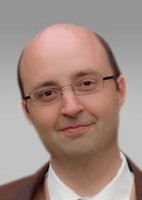 Based on a wealth of empirical evidence on the neuroscience, diagnosis and treatment of central auditory processing disorder (CAPD), Sound Auditory Training (SAT) is a soon-to-be-available new web-based program designed to train auditory processing skills in children, adults, and older adults with CAPD as well as other clinical populations, such as patients with cochlear implants. Developed by Drs. Chermak, Musiek and Weihing, SAT makes available well controlled stimuli that can be customized to exercise a
Based on a wealth of empirical evidence on the neuroscience, diagnosis and treatment of central auditory processing disorder (CAPD), Sound Auditory Training (SAT) is a soon-to-be-available new web-based program designed to train auditory processing skills in children, adults, and older adults with CAPD as well as other clinical populations, such as patients with cochlear implants. Developed by Drs. Chermak, Musiek and Weihing, SAT makes available well controlled stimuli that can be customized to exercise a  number of fundamental auditory skills. In addition to training, it provides clinicians with a tool-set to design one’s own training tasks and evaluate auditory skills, and provides clinical scientists with highly accessible stimuli to design psychoacoustic procedures. While the developers offer general guidelines for selecting specific tasks and setting parameters based on clinical profiles, SAT is not a program nor is it a test. Rather, SAT is a tool-set that includes adaptable auditory stimuli, a range of auditory tasks, and engaging graphic interfaces to meet the clinical or research needs of the professional.
number of fundamental auditory skills. In addition to training, it provides clinicians with a tool-set to design one’s own training tasks and evaluate auditory skills, and provides clinical scientists with highly accessible stimuli to design psychoacoustic procedures. While the developers offer general guidelines for selecting specific tasks and setting parameters based on clinical profiles, SAT is not a program nor is it a test. Rather, SAT is a tool-set that includes adaptable auditory stimuli, a range of auditory tasks, and engaging graphic interfaces to meet the clinical or research needs of the professional.
 The prevalence of CAPD is estimated at 5% of school-aged children and up to 70% of adults and older adults experiencing hearing and listening problems. The underlying impairments of individuals with CAPD are varied and not currently reducible to a single deficit. Auditory processing deficits frequently are seen in a number of other disorders including learning disabilities, dyslexia, language impairment, attention deficit disorder (ADHD), and autism. In order to properly describe and treat basic auditory deficits that can affect listening, communication, and learning, one needs to have a flexible, but easy to use tool that spans temporal, spectral, and binaural processing. The architecture of SAT incorporates the flexibility necessary to adapt stimuli for training regimens to meet the needs of particular individuals. The software provides the flexibility to train in either a game environment for children or a more standard psychophysical paradigm for adults.
The prevalence of CAPD is estimated at 5% of school-aged children and up to 70% of adults and older adults experiencing hearing and listening problems. The underlying impairments of individuals with CAPD are varied and not currently reducible to a single deficit. Auditory processing deficits frequently are seen in a number of other disorders including learning disabilities, dyslexia, language impairment, attention deficit disorder (ADHD), and autism. In order to properly describe and treat basic auditory deficits that can affect listening, communication, and learning, one needs to have a flexible, but easy to use tool that spans temporal, spectral, and binaural processing. The architecture of SAT incorporates the flexibility necessary to adapt stimuli for training regimens to meet the needs of particular individuals. The software provides the flexibility to train in either a game environment for children or a more standard psychophysical paradigm for adults.
 Sound Auditory Training relies on adaptive algorithms (i.e., the program changes in response to the user’s performance), flexible feedback to the user (via animations or counters), and flexible parameter settings for the clinician/clinical scientist, parents, educators, and users. Tasks train intensity, frequency, and temporal detection, discrimination, and identification using a variety of non-verbal (e.g., tones, noise) and minimally loaded verbal stimuli (e.g., consonant-vowel syllables). Immediate feedback (error correction and reinforcement) is provided through animations within the game. Skills are practiced intensively until they become habitual and automatic. The exercises are sequenced to challenge but not overwhelm the participant. The clinician can use the software to obtain a more comprehensive profile of an individual’s skill strengths and skill deficits in order to more efficiently and effectively target and train deficit areas on a variety of auditory tasks.
Sound Auditory Training relies on adaptive algorithms (i.e., the program changes in response to the user’s performance), flexible feedback to the user (via animations or counters), and flexible parameter settings for the clinician/clinical scientist, parents, educators, and users. Tasks train intensity, frequency, and temporal detection, discrimination, and identification using a variety of non-verbal (e.g., tones, noise) and minimally loaded verbal stimuli (e.g., consonant-vowel syllables). Immediate feedback (error correction and reinforcement) is provided through animations within the game. Skills are practiced intensively until they become habitual and automatic. The exercises are sequenced to challenge but not overwhelm the participant. The clinician can use the software to obtain a more comprehensive profile of an individual’s skill strengths and skill deficits in order to more efficiently and effectively target and train deficit areas on a variety of auditory tasks.
 In addition to its usefulness to clinical professionals, SAT is designed to be accessible to parents and teachers so that the exercises can be administered in a non-clinical environment. It is also designed to meet the needs of researchers to serve as a tool for investigation of auditory psychophysics, especially with children. The flexibility of the program allows updates based in research and thus promotes evidence-based practice. It provides auditory training exercises that encompass a wide range of auditory processing skills. Most important, SAT exercises auditory skills which are most likely to have a meaningful impact on a person’s listening, communication, and learning. Anticipated release date is August 2013 but you can contact Plural Publishing for more information and a web-based trial package.
In addition to its usefulness to clinical professionals, SAT is designed to be accessible to parents and teachers so that the exercises can be administered in a non-clinical environment. It is also designed to meet the needs of researchers to serve as a tool for investigation of auditory psychophysics, especially with children. The flexibility of the program allows updates based in research and thus promotes evidence-based practice. It provides auditory training exercises that encompass a wide range of auditory processing skills. Most important, SAT exercises auditory skills which are most likely to have a meaningful impact on a person’s listening, communication, and learning. Anticipated release date is August 2013 but you can contact Plural Publishing for more information and a web-based trial package.
 Dr. Gail D. Chermak is an internationally recognized authority on central auditory processing disorder (CAPD). She has published extensively and lectured around the world on differential diagnosis and treatment of CAPD. Her two-volume Handbook of (Central) Auditory Processing Disorder, edited with Frank Musiek and published in 2007, is considered the definitive text on CAPD. Dr. Chermak is professor of audiology and chair of the Department of Speech and Hearing Sciences at Washington State University. She is the recipient of numerous honors and awards, including the American Academy of Audiology’s (AAA) Distinguished Achievement Award and the “Book of the Year Award” for the Handbook of Central Processing Disorder Vol. I and II. She is a Fellow of the American Speech-Language-Hearing Association (ASHA) and she is included in several major American and international biographical listings. She has chaired and served on a number of national professional committees and task forces, including the 2010 AAA task force which published evidence-based clinical practice guidelines for CAPD. She has authored over 100 articles and book chapters, and authored or edited 4 books. She is an assistant editor for the Journal of the American Academy of Audiology and she serves as editorial consultant for several other professional and scientific journals.
Dr. Gail D. Chermak is an internationally recognized authority on central auditory processing disorder (CAPD). She has published extensively and lectured around the world on differential diagnosis and treatment of CAPD. Her two-volume Handbook of (Central) Auditory Processing Disorder, edited with Frank Musiek and published in 2007, is considered the definitive text on CAPD. Dr. Chermak is professor of audiology and chair of the Department of Speech and Hearing Sciences at Washington State University. She is the recipient of numerous honors and awards, including the American Academy of Audiology’s (AAA) Distinguished Achievement Award and the “Book of the Year Award” for the Handbook of Central Processing Disorder Vol. I and II. She is a Fellow of the American Speech-Language-Hearing Association (ASHA) and she is included in several major American and international biographical listings. She has chaired and served on a number of national professional committees and task forces, including the 2010 AAA task force which published evidence-based clinical practice guidelines for CAPD. She has authored over 100 articles and book chapters, and authored or edited 4 books. She is an assistant editor for the Journal of the American Academy of Audiology and she serves as editorial consultant for several other professional and scientific journals.
 Frank Musiek, PhD is Professor and Director of Auditory Research within the Department of Speech Language and Hearing Sciences, and Professor of Otolaryngology, School of Medicine, at the University of Connecticut. He is the 2007 AAA Recipient of the James Jerger Career Award for Research in Audiology, the 2010 recipient of The Honors of the American Speech, Language and Hearing Association, and Recipient of Book of the Year Award for Handbook of Central Processing Disorder Vol. I and II (with Gail Chermak co-editor). He has published over 190 articles and book chapters in the areas of auditory evoked potentials, central auditory disorders, neuroaudiology and auditory neuroanatomy. He has authored or edited 9 books including his latest Disorders of the Auditory System.
Frank Musiek, PhD is Professor and Director of Auditory Research within the Department of Speech Language and Hearing Sciences, and Professor of Otolaryngology, School of Medicine, at the University of Connecticut. He is the 2007 AAA Recipient of the James Jerger Career Award for Research in Audiology, the 2010 recipient of The Honors of the American Speech, Language and Hearing Association, and Recipient of Book of the Year Award for Handbook of Central Processing Disorder Vol. I and II (with Gail Chermak co-editor). He has published over 190 articles and book chapters in the areas of auditory evoked potentials, central auditory disorders, neuroaudiology and auditory neuroanatomy. He has authored or edited 9 books including his latest Disorders of the Auditory System.
 Dr. Jeffrey Weihing received his Masters and Doctorate degrees in Audiology from the University of Connecticut, where he specialized in electrophysiology and the diagnosis & treatment of (central) auditory processing disorder. He currently provides clinical services and is an instructor in the AuD program at the University of Louisville. His research interests include generation of more sensitive measures of hearing in noise ability, establishing efficacious treatments for auditory processing disorders, and using electrophysiological measures to predict outcomes in hearing aid fittings.
Dr. Jeffrey Weihing received his Masters and Doctorate degrees in Audiology from the University of Connecticut, where he specialized in electrophysiology and the diagnosis & treatment of (central) auditory processing disorder. He currently provides clinical services and is an instructor in the AuD program at the University of Louisville. His research interests include generation of more sensitive measures of hearing in noise ability, establishing efficacious treatments for auditory processing disorders, and using electrophysiological measures to predict outcomes in hearing aid fittings.

NO diagnosis of CAPD is valid until Auditory Neuropathy Spectrum Disorder (ANSD) has been conclusively ruled out. Period.
Unfortunately, we’re seeing a lack of ANSD knowledge among hearing care professionals of all stripes. What’s more, we’re seeing misdiagnosis of ANSD as CAPD by professionals who have had some training in CAPD but little or no training in ANSD: “If all you have is a hammer, everything looks like a nail.”
For more on ANSD, please see Multi-site diagnosis and management of 260 patients with Auditory Neuropathy-Dys-synchrony (Auditory Neuropathy Spectrum Disorder), by Berlin, Hood, Morlet et al (2010). Also, please see Interview with Charles Berlin, PhD: Auditory Neuropathy Spectrum Disorder, OAEs, ABR, and More
Dan Schwartz, Electrical Engineer
E-mail: Dan@Snip.Net
Editor, The Hearing Blog
Add me on Facebook